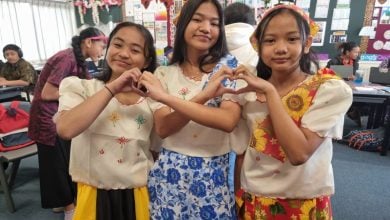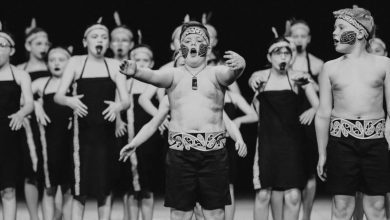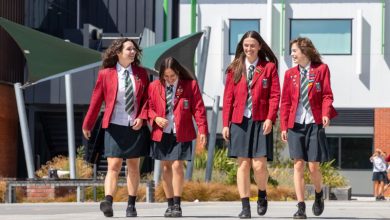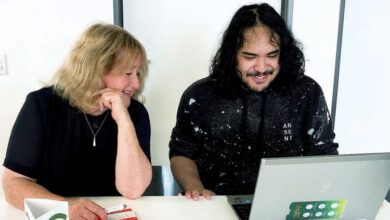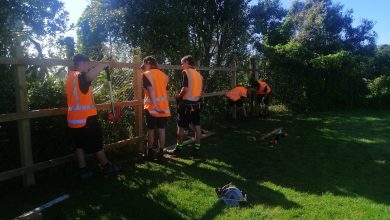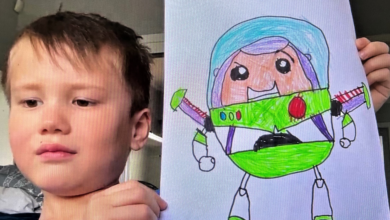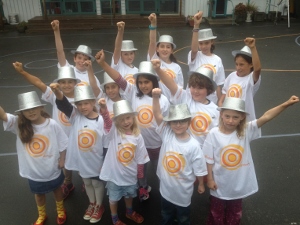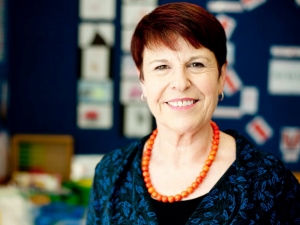New philosophies grounded in school’s core values
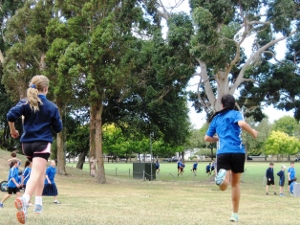
 Christchurch school Breens Intermediate, built in 1986, has been recognised as an example of the Modern Learning Environment (MLE), the new educational concept being introduced in schools across the country.
Christchurch school Breens Intermediate, built in 1986, has been recognised as an example of the Modern Learning Environment (MLE), the new educational concept being introduced in schools across the country.
MLE incorporates both physical aspects – open-plan learning spaces, quiet spaces, a variety of furniture, and new teaching methods with a focus on sharing and collaboration. However, as Breens Intermediate principal Brian Price points out, there is very little that is modern about the physical nature of his school.
“Breens is a school that in 2008 had to get permission from the Ministry of Education to put glass windows inside and convince the Ministry’s property staff that it was a good way to deprivatise teaching practice,” Mr Price says, “and that’s when the Breens story started with new philosophies being adopted that were grounded in the strong values the school sees as its core.”
One of the significant chapters in that story was the February 2011 earthquake, which resulted in 280 Year 8 students from Heaton Intermediate and later the children from the Bishopdale Community Preschool sharing the Breens site.
“We learnt a lot about the importance of our values and how every school needs to have a strong values base, as a result of site sharing,” Mr Price says.
While the Heaton Intermediate students have now returned home, the preschoolers will be a permanent presence.
“The idea of a preschool on an intermediate site originally presented challenges and some nervousness, but it has turned out to be brilliant for everyone,” Mr Price says.
“There is a lot of interaction between our students and the preschool. The Bishopdale Community Preschool is now building a permanent facility on our northern boundary and everyone is thrilled that the relationship can continue.”
The renewal programme at Breens Intermediate that followed the quake also meant there was no 5YA money to spend on property, though classrooms have been opened up to create a shared environment, Mr Price says.
“MLE is not about the buildings or the furniture, it’s about the ability to have teachers working collaboratively and students leading their learning and understanding where they are at, and how to get to the next level. But the teachers have had to rethink things and it has been an exciting challenge.
“The year after the quake, 2012, was a difficult time. There was the site sharing, and some teachers were not coping with the post-quake stress of dealing with damage to their homes and other issues.”
Mr Price says the new teaching methods that are the basis of MLE have seen the traditional practices that were developed in the industrial age, with teachers working in isolation and the children sitting in rows like a production line and working to time constraints, being superseded. The onset of the information age and the development of ICT have required this new approach to education.
“Now we are into the creative age, which involves more interactive learning. Social media and electronic devices are all part of that. The speed at which digital devices are being developed and used means things are changing exponentially.
“It gives teachers the freedom to teach to the particular needs of the students, but they had to understand the ubiquity of today’s learning, the concept that online teaching and learning can happen any place at any time.
“These are exciting times, different times. But the question was, how do you get every teacher feeling better about the position they were in and how would they keep up with the changes,” Mr Price says.
The answer was the ‘power of three’, a concept he says everyone discussed and agreed made sense. The school was divided into ‘hapu’ of 90 students with three teachers – a people’s person, a systems person and a big picture person – responsible for each hapu.
“This means each child has the opportunity to work with three different teachers. We started the year in single cell classes for the first six to seven weeks for Years 6 and 7 and then moved it into the deprivatised environment. It’s about giving the students choices and challenges. They can choose what they want to do.
“It requires close monitoring and very careful planning, but the students really enjoy it, and we have seen behaviour and motivation improve significantly. They are not bored any more. It also enables every teacher to get to know the individual students.”
For the concept to work, Mr Price, says, a high trust environment is essential.
“When you have a high trust environment within a collaborative environment, risk taking becomes natural and education can be more relaxed and natural. I love the educational model we are evolving at Breens.”
The school’s strong values base, which is centred on the school’s iconic totara tree and embraces the first three pages of the New Zealand Curriculum, has underpinned the events and changes that have occurred at Breens Intermediate.
“We spent a very long time working on developing the values. Over the last six or seven years the staff, students and community at Breens not only created our school’s five core values – Belonging, Beauty, Bravery, Brilliance and Boldness, but these also became the tools to help us during the strains and pressures of the earthquake, get through and move forward. They were the measuring stick of change.”
They also define the roles of the three hapu teachers. The people’s person is responsible for Belonging and Beauty; the system person is responsible for Bravery and Boldness; the big picture person is responsible for Brilliance and looks after excellence and quality, ensuring a “rich and responsive” curriculum is delivered.
One area of the curriculum the students identify as a subject they love is technology, Mr Price says.
“It’s what Kiwi kids love and need – making real things with real tools in a real environment.”
Topics covered in the technology department are food, textiles, science and digitech.
The school library is the centre of information and technology learning, with 3D printers among the range of computerised equipment available to the students.
“Whatever the changes are to technology, let’s never water down what is central to the DIY philosophy that makes Kiwis great, and famous around the world,” Mr Price says.
Having been in the teaching profession for 24 years and the principal at Breens Intermediate for almost eight years, Mr Price says he loves the concept of collaboration across schools and the way schools are finally starting to work together.
“Competition in New Zealand schools has had its day. We need to be more collaborative for the greater good and start to see gains across schools, not only within schools.
“But you need to get collaboration in schools before it goes between schools. I look forward to seeing schools working closer together so that every school is a great school, not the winner/loser school situation that has evolved over the last 25 years.”

